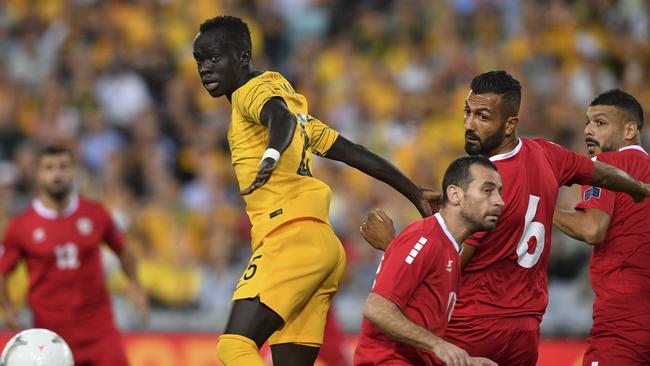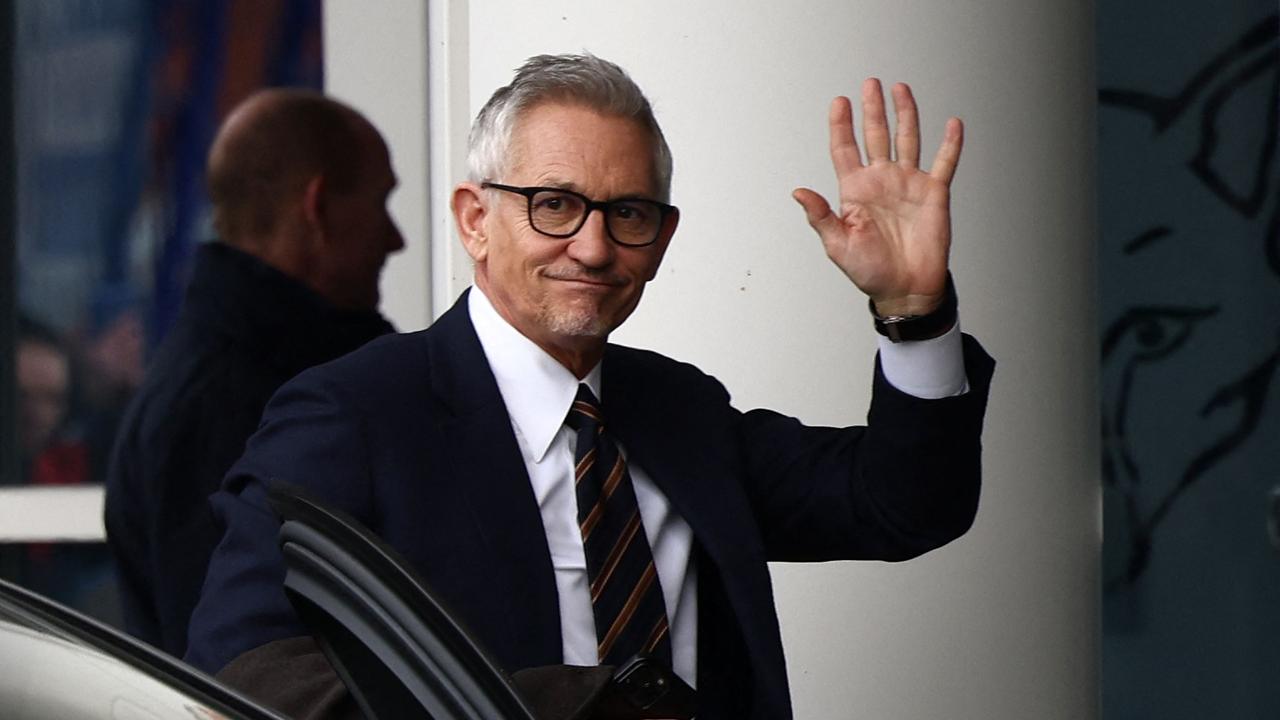Next-gen Socceroos pumped for Cup
Australia face many obstacles in their quest to win back-to-back Asian Cups.

There’ll be no home advantage, just a series of steep challenges and potential banana skins in a region where Australia has not historically dominated.
The 17th Asian Cup looms as the Socceroos’ first major tournament in more than a decade without stalwarts Tim Cahill and Mile Jedinak. It will also, quite literally, be the biggest in its 62-year history, expanded to 24 teams from the 16 that battled it out Down Under four years ago.
Continental newbies Kyrgyzstan, the Philippines, Yemen and Vietnam are among the eight additions that ensure a new round of 16 and lengthier path to the trophy.
Fifty-one games will be played over 28 days in eight different venues across four host cities — Abu Dhabi, Dubai, Al Ain and Sharjah — starting with host nation United Arab Emirates against Bahrain in the capital today.
Days out from the tournament, though, crowd expectations remain a veritable unknown.
In Australia, the punters defied expectations and came in droves, although there’s no guarantee of a repeat.
The Emiratis, who made the final last time they played host in 1996, have demonstrated via last month’s Club World Cup that a local love for the game can be stirred if there is success.
Al Ain’s stunning run past River Plate to the final against Real Madrid could not have come at a better time, although there’s no denying the Spanish giants’ star power would have contributed.
Also, the absence of injured UAE standout Omar Abdulrahman from this tournament will not help.
The biggest name hands down is Tottenham’s Son Heung-min, who’ll take leave from the Premier League in time to link up with highly fancied South Korea for their third group game against China, who are stuttering under decorated Italian manager Marcello Lippi.
And a sporting event in Asia would not be complete without a geopolitical rivalry.
The highlight of this instalment resides in Group E, where Saudi Arabia will face neighbours Qatar, with whom they severed diplomatic ties 18 months ago over Doha’s alleged — and denied — support of terrorism.
For their own part, controversial World Cup hosts Qatar will just be hoping they can offer signs they won’t be embarrassed come 2022.
Then there are the fairytale-seekers such as 2007 winners Iraq, Yemen, and Socceroos group foes Syria and Palestine, all nations bearing the hardships of regional turmoil. Reigning champions Australia are without doubt the hunted, in a part of the world they’ve struggled in recent decades and now without post-World Cup retirees Cahill and Jedinak.
“Obviously Timmy and Mile captaining the team for so long, and having such a heavy influence on it, you do miss having those players around,” new skipper Mark Milligan said yesterday.
“We’ve had to have other people step up into those roles and fill the leadership gap that’s been left which is obviously massive.
“But the majority of the players have taken that on and have stepped up.”
On paper Group B is very straightforward, but the Socceroos have learnt the hard way there’s no such thing as an easy ride.
Syria, the feel-good story of the World Cup qualifiers, pushed Ange Postecoglou’s side all the way in the play-offs for the 2018 finals and loom as the biggest challenger.
Palestine will present a sterner test four years on from their maiden Asian Cup appearance in 2015, and first-up opponents Jordan have twice beaten Australia in the Middle East despite sliding down the rankings.
Further down the track the heavier favourites loom in Paulo Bento’s attack-happy South Korea, who the Socceroos dramatically beat in the last final, 1997 World Cup playoff nemesis Iran, and perennial powerhouse Japan, along with regular World Cup attendees Saudi Arabia.
And should the Socceroos top the group, they’ll find themselves on a quarter-final collision course with Japan.
Carlos Queiroz’s defensively impregnable Iran, Asia’s top-ranked team at world No 29, potentially await in the semis. Whoever the Socceroos meet, new coach Graham Arnold has consigned the epic 2015 triumph to history.
“If you look at the last four years and the World Cup qualifiers, we finished probably fifth best in Asia and qualified in fifth place more or less, and played off against Syria and Honduras,” Arnold said.
“I just see it’s totally different. Different group of players, different staff, everything’s different.
“You can’t compare it, and there’s a lot of fresh faces who are doing great things.”
That’s true, and training form certainly suggests Arnold is on to a good thing with his new order and flexible philosophy.
But there’s no denying the injury-inflicted absences of Aaron Mooy, Daniel Arzani and Martin Boyle are a significant blow.
Not to mention the absence of Mat Leckie during the group stage, although the hamstrung forward looks likely to be remain in camp to provide impact later in the tournament as part of a rejigged attack.
Even then the squad remains strong, and there’s X-factor potential in youngsters such as Chris Ikonomidis and Awer Mabil, with more established faces including Jackson Irvine, Massimo Luongo and Tom Rogic well primed. Still, if Australia goes all the way under current circumstances it’ll be something of a miracle. It’s a good thing Arnold believes in them.



To join the conversation, please log in. Don't have an account? Register
Join the conversation, you are commenting as Logout